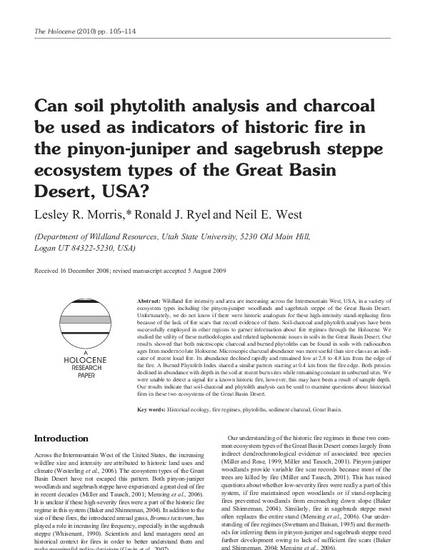
Article
Can soil phytolith analysis and charcoal be used as indicators of historic fire in the pinyon-juniper and sagebrush steppe ecosystem types of the Great Basin Desert, USA?
Holocene
(2010)
Abstract
Wildland fire intensity and area are increasing across the Intermountain West, USA, in a variety of ecosystem types including the pinyon-juniper woodlands and sagebrush steppe of the Great Basin Desert. Unfortunately, we do not know if there were historic analogues for these high-intensity stand-replacing fires because of the lack of fire scars that record evidence of them. Soil-charcoal and phytolith analyses have been successfully employed in other regions to garner information about fire regimes through the Holocene. We studied the utility of these methodologies and related taphonomic issues in soils in the Great Basin Desert...
Disciplines
Publication Date
2010
DOI
https://doi.org/10.1177%2F0959683609348858
Citation Information
Neil E. West. "Can soil phytolith analysis and charcoal be used as indicators of historic fire in the pinyon-juniper and sagebrush steppe ecosystem types of the Great Basin Desert, USA?" Holocene Vol. 20 Iss. 1 (2010) Available at: http://works.bepress.com/neil_west/17/
